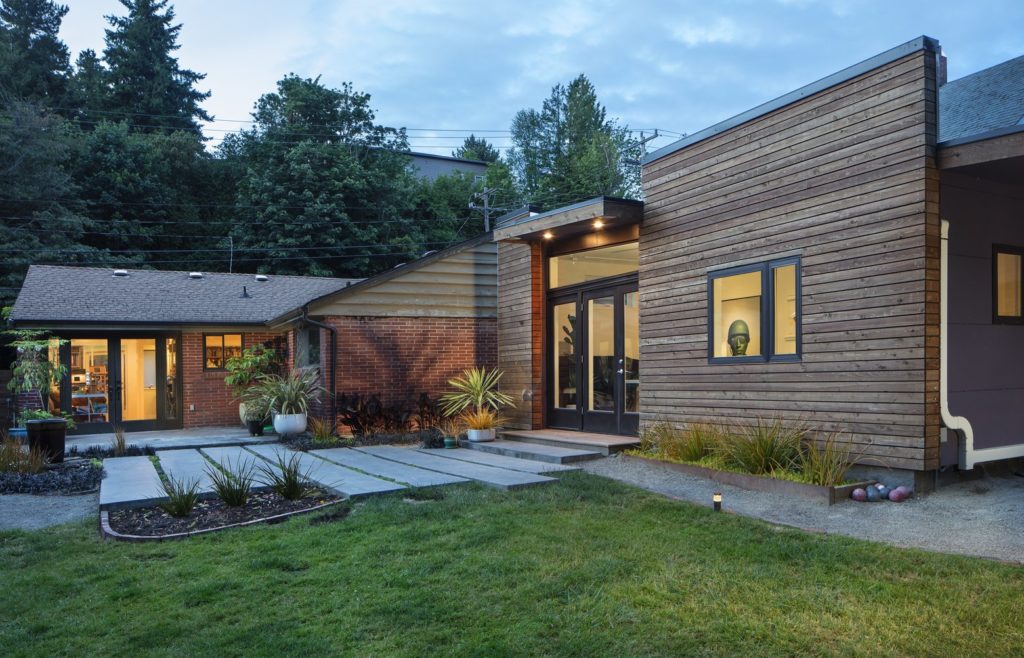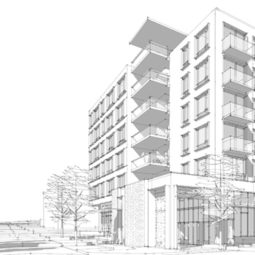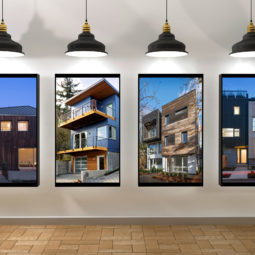
A West Seattle family’s custom detached accessory dwelling unit has plenty of room for fun and function.
Sandy Deneau Dunham
YOU’VE GOT YOUR mailbox. Your Xbox. Your toolbox. Sandbox, jewelry box, moving box. You might have boxes inside of boxes on top of boxes, but you do not have a Backyard Box.
We know that because John and Nichelle Keatley have the only one ever, anywhere — and it is so much more than a box.
The Keatleys — John’s a photographer; Nichelle does business accounting — live in West Seattle with their two young kids and two dogs. Their charming home is not gigantic, and they needed more room (they ruled out remodeling because of the cost, Nichelle says, and then noticed that nice big backyard sitting there all empty) … but first they needed a little pep talk.
“There was a series of self-justifications,” John says: “The business was growing; we had another child, and were getting squeezed out of the house; my sister needed a place to live. What if we built a place?”
They weren’t sure exactly what they wanted, but “a sense of design” was crucial. Then they found Jim Burton’s website, and the Backyard Box.
“We thought, ‘Oh, my gosh,’ ” John says. “It felt like something we could grow into, and it was another level of design. We got really excited about the design. It’s a place to work, and also live, like for big dinner parties.”
Burton designed the Backyard Box concept with his developer friend, Sloan Ritchie of Cascade Built, back in 2010, when he called his firm Blip Design (it’s now Jim Burton Architects). The Backyard Box is actually an entire line of detached accessory dwelling units — various sizes and configurations, all sustainable, modern, turnkey and ADA-adaptable.
The Keatleys’ 374-square-foot Box is truly one of a kind, Burton says, and also kind of famous (it won “best of show” and “most sustainable” in the Backyard Cottage Design Challenge).
“This one is a variation on the studio plan,” he says. “We started with a hybrid of two and developed it into a custom design.”
It’s also pretty affordable. Even though their backyard ruled out on-site Box building, an encroaching hill necessitated a custom side entry, and the Keatleys added a little square footage and “quite a few windows,” Nichelle says, the price ended up around $80,000 to $90,000.
There’s an incredible amount of efficient design, and flexibility, in this clever little Box, with its sloped-ceiling open space, a kitchenette, a bathroom and a service area.
Its primary purpose in the Keatleys’ backyard is as an office and guest space, both of which are paying off brilliantly. “The kids know when we’re out here, we’re at work,” Nichelle says. “We’re not in the house with, ‘Hey, Dad!’ We’ve had four people out here working, and we’re not on top of each other.”
But this also is a Box o’ well-rounded fun. “One of my hobbies is bartending,” John says. “We’ll host get-togethers, and I’ll make drinks. If we have a party in the house, this becomes overflow. People always want to take a tour. And our son will come out and color during the day. They know they can come out and be creative.”
Basically, the Keatleys have a gift box in their backyard that just keeps on giving.
“I could see adapting it to fit a new setup if we remodel,” John says. “I love the idea of the kids having sleepovers and watching movies here. Or on weekends, if we did a movie night. You always have needs that change — we’ve never run up against anything this hasn’t been able to accommodate.”
Sandy Deneau Dunham writes about architecture and design for Pacific NW magazine. Reach her at sdunham@seattletimes.com or 206-464-2252.
Steve Ringman is a Seattle Times staff photographer.




